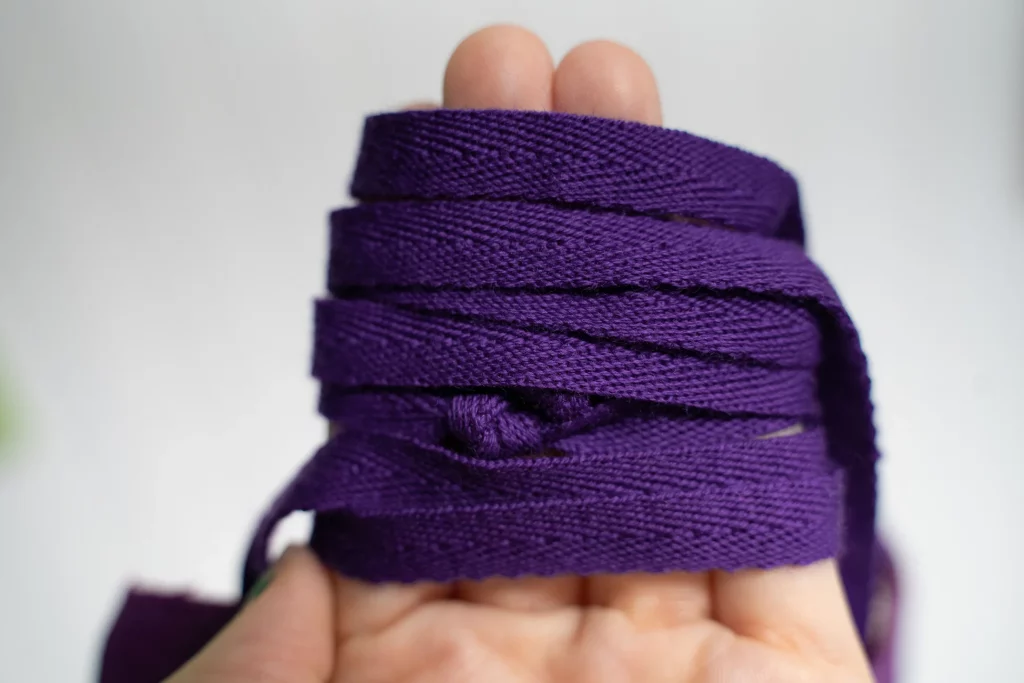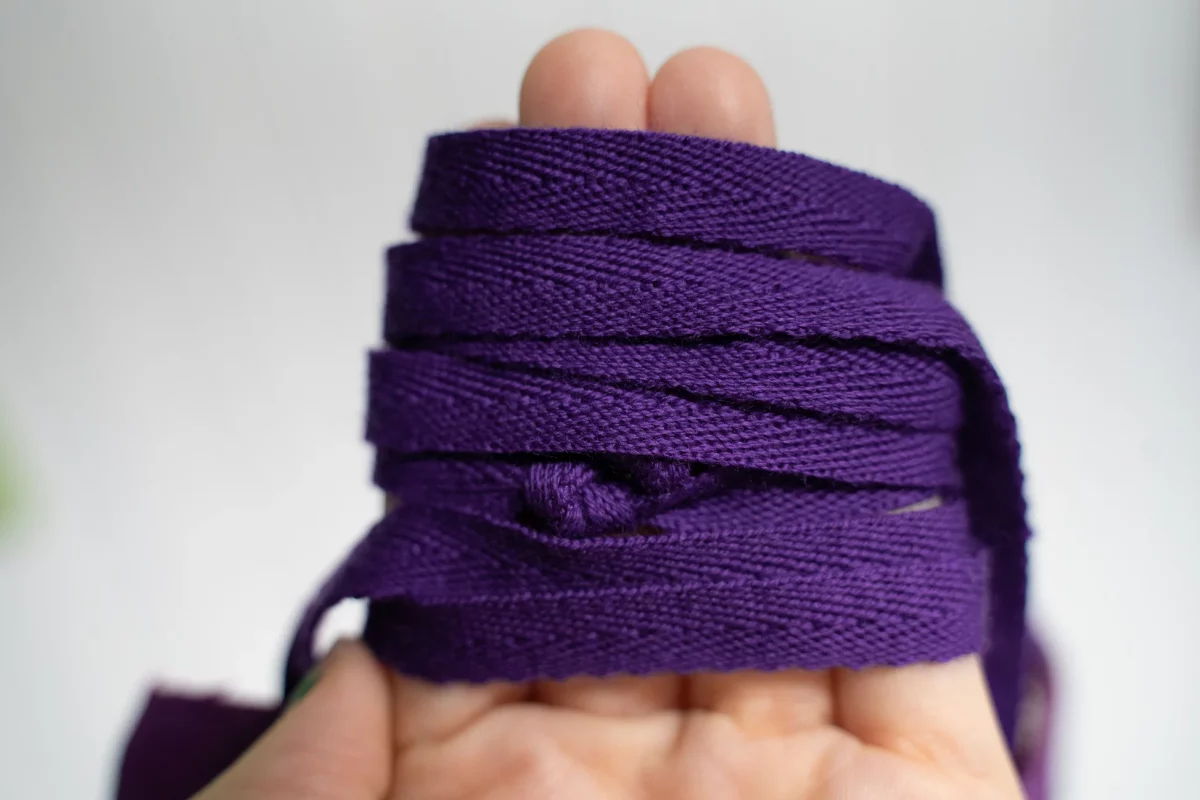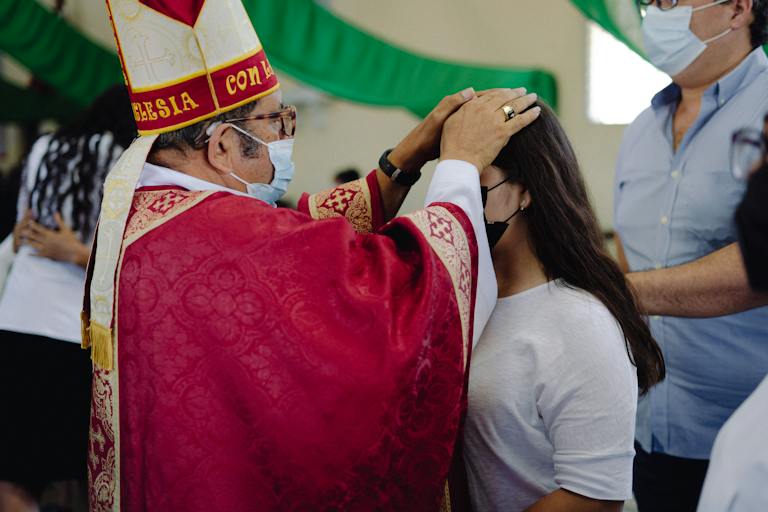Is the Purple Scapular approved by the Catholic Church?
The scapular is a popular Catholic devotional that typically consists of two small pieces of cloth connected by cords and worn over the shoulders. Devotion to the scapular dates back to the 13th century and is associated with certain promises and spiritual benefits.
In recent years, a new type of scapular has emerged, often called the “purple scapular” or “scapular of Benediction.” This scapular was designed in the early 2000s and features images of the Sacred Heart of Jesus and the Immaculate Heart of Mary.
What is the Purple Scapular?
The purple scapular is a scapular that was revealed by Jesus to a discalced Carmelite nun named Sister Marie Martha Chambon between the years 1870 and 1950 in Chambéry, France. Jesus reportedly told Sister Chambon that this new scapular would bring great graces and spiritual protection to those who wear it devoutly.
The scapular consists of an image of the Sacred Heart of Jesus on one piece of purple cloth and an image of the Immaculate Heart of Mary on the other purple cloth, connected by cords so it can be worn around the neck. There is a crown of thorns surrounding the images.
What are the Promises and Blessings?
According to the purported revelations to Sister Chambon, Jesus made extraordinary promises to those who wore the purple scapular:
- They will receive everything they ask for through the intercession of Our Lady of Mount Carmel.
- They will enjoy the special protection of Mary, who will guard them under her mantle.
- The Sacred Heart and Immaculate Heart will pour abundant blessings and graces on them and their families.
- They will have the grace to keep themselves from mortal sin.
- They will experience joy in suffering because Jesus and Mary will console them and give them strength.
Jesus also reportedly warned that anyone who would scorn or attack this “marvelous scapular” of His Sacred Heart would suffer punishments from God.
Is this Scapular Officially Approved?
Despite these amazing promises associated with the purple scapular, it does not currently have approval from the Catholic Church.
The brown Carmelite scapular is one example of how most scapulars start as a religious order-approved devotion. The purple scapular, however, comes from a private revelation and was created relatively recently in the 20th century.
Reasons it May Never Be Approved
There are several reasons why the Catholic Church may be hesitant to approve of the purple scapular devotion:
1. The revelations are questionable and controversial
While Sister Chambon was declared Venerable by Pope John Paul II in 1990, her reported visions and messages have raised concerns among church authorities. As a result, the Church has not officially acknowledged the legitimacy and supernatural origins of these private revelations.
2. The scapular promises lack theological clarity
Theologians have criticized some of the purple scapular promises as being exaggerated and in conflict with Catholic doctrine on grace and free will, such as protection from mortal sin. The Church is understandably cautious about approving devotions that make guarantees that seem to circumvent one’s responsibility to pursue virtue.
3. The punishment warnings could be coercive
The dire warnings of punishments for those who oppose or scorn the purple scapular have been deemed lacking in Christian hope and charity by critics. There is a concern that they could induce an unhealthy fear rather than genuine devotion.
4. Competition with established devotions
Given that devotions like the Sacred Heart of Jesus and Immaculate Heart of Mary already exist (with properly approved associated scapulars), the Church may see no reason to approve a new scapular that essentially combines these two popular spiritualities.

Dioceses That Permit the Scapular
While the purple scapular remains unapproved at the universal level, the following dioceses have given at least private approval for this sacramental based on a devotion to the revelations given to Sister Chambon:
- Archdiocese of Douala, Cameroon
- Archdiocese of Cali, Colombia
- Diocese of Kharkiv-Zaporizhzhia, Ukraine
So in some areas, such as Cameroon and Colombia, the purple scapular can be worn with permission from the local bishop. Promoters point out that no diocese has explicitly condemned or banned the purple scapular.
Stance of Discalced Carmelites Order
Given that Sister Chambon was a nun of the Discalced Carmelite order, it is notable that the Carmelites themselves have not taken any formal stance on the purple scapular. There has been no decree from Carmelite authorities approving its establishment or prohibiting its promotion.
Individual discalced Carmelite priests and members may regard the scapular positively based on their personal devotion. However, officially, the Carmelite order has made no pronouncements one way or another regarding Sister Chambon’s visions or the image and promises of the purple scapular. Their position could be summarized as one of prudent neutrality.
Our Lady of Mount Carmel and the Brown Scapular
Importantly, no one is claiming that the purple scapular should replace or supersede devotion to Our Lady of Mount Carmel and her brown scapular. The Carmelite order continues to endorse the brown scapular as the top Marian devotional.
On the other hand, some supporters argue that if an individual privately chooses to also wear the purple scapular alongside the brown one, while understanding that its sanction is limited, there need be no conflict between the two sacramentals. In their view, the Carmelite charisms surrounding Mary can coexist with a special devotion to the Sacred and Immaculate Hearts.
Is the Purple Scapular Required for Salvation?
A controversial aspect surrounding some scapulars is the belief that wearing them guarantees salvation or entering heaven upon death. However, it should be clarified that in Catholic teaching, salvation is never contingent on any physical object.
The Catechism affirms that “Baptism is necessary for salvation for those to whom the Gospel has been proclaimed and who have had the possibility of asking for this sacrament.” And while devotions like scapulars can assist one spiritually, the Church clearly teaches that salvation always comes through God’s grace and one’s faith lived out through charity and good works, not because of the magical properties of sacramentals.
In fact, even in regards to widely-approved devotions like the brown scapular, the Catholic Church has clarified any exaggerated promises about salvation associated with them in recent times. It has made sure to emphasize that wearing the brown scapular does not automatically grant heaven or forgiveness of sins; one’s disposition of faith and works done in God’s grace are what ultimately obtain salvation.
Conclusion
In summary, at the present time, the purple scapular is a controversial private revelation that has partial approval at the local level only. While some dioceses permit it, it remains unauthorized for universal faithful use within the Catholic Church.
Due to unresolved ecclesial and theological questions surrounding the purple scapular, the Church remains reticent to fully approve this sacramental. Unless these issues of authenticity, hyperbolic promises, redundancy with other devotions, and so forth can be adequately addressed, it appears unlikely that official approval from the Vatican will be granted.
Of course, the Church always focuses first on fundamentals like prayer, virtue, and charity, not devotional accouterments. So while the curious or devoted may continue privately wearing sacramentals like the purple scapular, they should always remember their deeper call to live out discipleship within their state of life.







